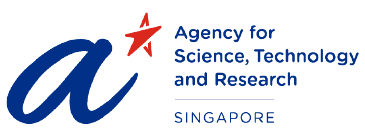Letter from the director
The dinner conversation is in full swing. I tell a story of a sign in Munich that reads “Heisenberg might have slept here.” Outburst of laughter. By the way, do you know Schrödinger’s favourite Bond-movie? “Live and Let Die.” Another good one, I thought...
Now, you may think I was dining with CQTians, my geeky colleagues. Not so. Most of my companions that night were bankers and politicians. I used to think that introducing myself as a quantum physicist was a conversation stopper. These days, courtesy of the media’s obsession with quantum computers, we are perceived as cool. People may not know exactly what we do but still they find it fascinating. So here again in 2019 we present our CQT annual report to inform, educate and entertain.
In some sense 2019 was like any other year; research went on, papers were published, laser beams were aligned. We welcomed David Wilkowski as our new Principal Investigator and, in our efforts to support quantum startups, we joined forces with SGInnovate. We worked together with Science Centre Singapore to stage the exhibition QUANTUM. The exhibition traces the history of quantum theory and the development of quantum technologies worldwide, including contributions from Singapore.
We are also looking to the future. Singapore’s quantum community is growing rapidly and, if we are to remain internationally competitive, we must work together to consolidate our research and engage with policymakers to contribute to the development of national strategy in quantum technologies. You can read more about our plans in the report.
Finally, if you want to know more about the basic components of quantum computers, learn from our feature on quantum logic with trapped ions. Building quantum computers will take time, but it will be time well spent, a truly joint effort of physicists, computer scientists and engineers.
On the lighter side of science, I must mention the Nobel prize, well, OK, the Ig Nobel prize, awarded to Rainer Dumke and his team for their work on the magnetisation of cockroaches. Whenever scientists come up with new technology, that technology is likely to find applications we could never have predicted at the outset of the research. Using an atomic magnetometer to study the magnetic sense of cockroaches is an excellent example of an unexpected use case for a quantum device. The findings also fit the ambition of Ig Nobel prizes to honour achievements that make you laugh, then think.
That’s a story I can add to my after-dinner repertoire. We hope that readers of this report will also find stories they want to share. CQTians have worked hard for these results. The CQT annual report for 2019 aims not only to give updates to our colleagues and collaborators, but also to inform those who may find themselves in conversation with, or even in business with, a quantum physicist. I wish you happy reading.

Artur Ekert was CQT's founding Director, leading the Centre from December 2007 to July 2020. He was also the Lee Kong Chian Centennial Professor at the National University of Singapore and the Professor of Quantum Physics at the Mathematical Institute, University of Oxford, UK. He is one of the pioneers of quantum cryptography. He has worked, communicated with and advised several companies and government agencies.
His current research extends over most aspects of information processing in quantum-mechanical systems. He is a recipient of several awards, including the 1995 Maxwell Medal and Prize by the Institute of Physics and the 2007 Royal Society Hughes Medal. In his non-academic life he is an avid scuba diver.






